This collection consists of postcards and photographs collected by Joan Goodall. Areas depicted include Old Massett, Hazelton, Kitwangar, Port Simpson and other areas. Most images have totem poles or other massive carvings depicted.
ITEMS IN COLLECTION:
“The Museum of Northern British Columbia with the wolf totem and two Haida poles”
– 1960 – 1 postcard : colour ; 8.5 x 14 cm.
“From Joan Goodall Aug/78 – Fertility symbol used on island of [Tan] during yearly festival on island of [Tanna]” – 1978 - 1 photograph : colour ; 12 x 9 cm.
“623” [people in front of cemetery] – [19-] –1 photograph : b&w ; 14 x 9 cm.
“623” [totem pole and dead tree] – [19-] – 1 photograph : b&w ; 14 x 9 cm.
“713” [wooden sidewalk with totem poles] – [19-] - 1 photograph : b&w ; 9 x 14 cm.
“713” [view of a wooden fence with a tree flanked by matching totem poles] – [19-] – 1 photograph : b&w ; 9 x 14 cm.
“The Lion Totem of Kitwangar, BC” – [19-] – 1 postcard : b&w ; 14 x 9 cm.
“Port Simpson, Totems” – [19-] – 1 postcard : b&w ; 14 x 9 cm.
“Alaska Indian Carvings” – [19-] – 1 postcard: b&w ; 9 x 14 cm.
“Indian Totem, Hazleton, BC” – [19-] – 1 postcard : b&w ; 9 x 14 cm.
“Indian Totems, Old Massett, BC” – [19-] – 1 postcard : b&w ; 9 x 14 cm.
“1926” [two totem poles in front of a wooden house] - 1926- 1 photograph : b&w ; 11 x 7 cm.

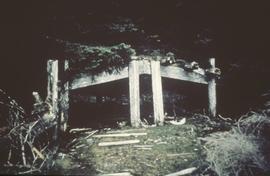
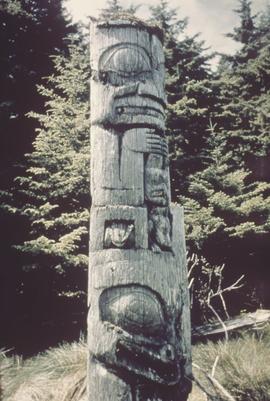
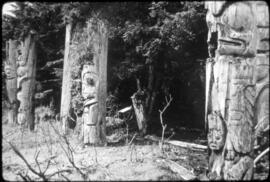

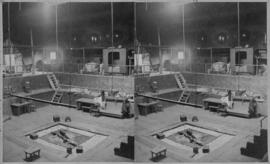

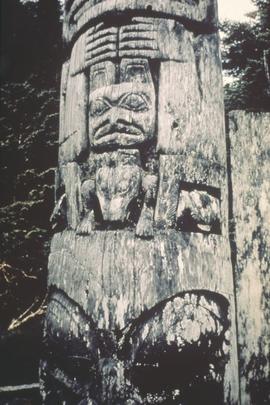
![Hydah [Haida] chief, Skidegate, Q.C.I.](/uploads/r/null/7/b/f/7bfd95877c152f2f35beb99d303f07d7e9a8db79cce44034166338fc4c96cfc0/a039270c_142.jpg)